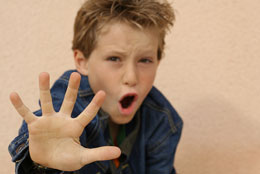Lesson 23: Indicators of Abuse
 It is important that people working with children are aware of the indicators of abuse and have the confidence to respond to any indication that a child may have been abused.
It is important that people working with children are aware of the indicators of abuse and have the confidence to respond to any indication that a child may have been abused.
Some indicators of child abuse are:
- bruising, particularly in the face, head or neck region
- injury left untreated
- differing versions of how an injury occurred
- child/relative advising of abuse
- a child, referring to someone else being abused, may mean him/herself
- sexual behaviour which is inappropriate for the age of the child
- nightmares/bedwetting/going to bed fully clothed
- a high level of distrust of other people
- an inability to relate well to adults and/or children
- extreme attention-seeking behaviour, disruptive or aggressive behaviour and bullying
- seeking indiscriminate or inappropriate adult affection.
The presence of one indicator does not necessarily suggest that a child is the subject of abuse. People working with children need to consider the context in which the indicators are observed and use common sense.
If you feel any doubt, ring and consult with the child protection authorities.
